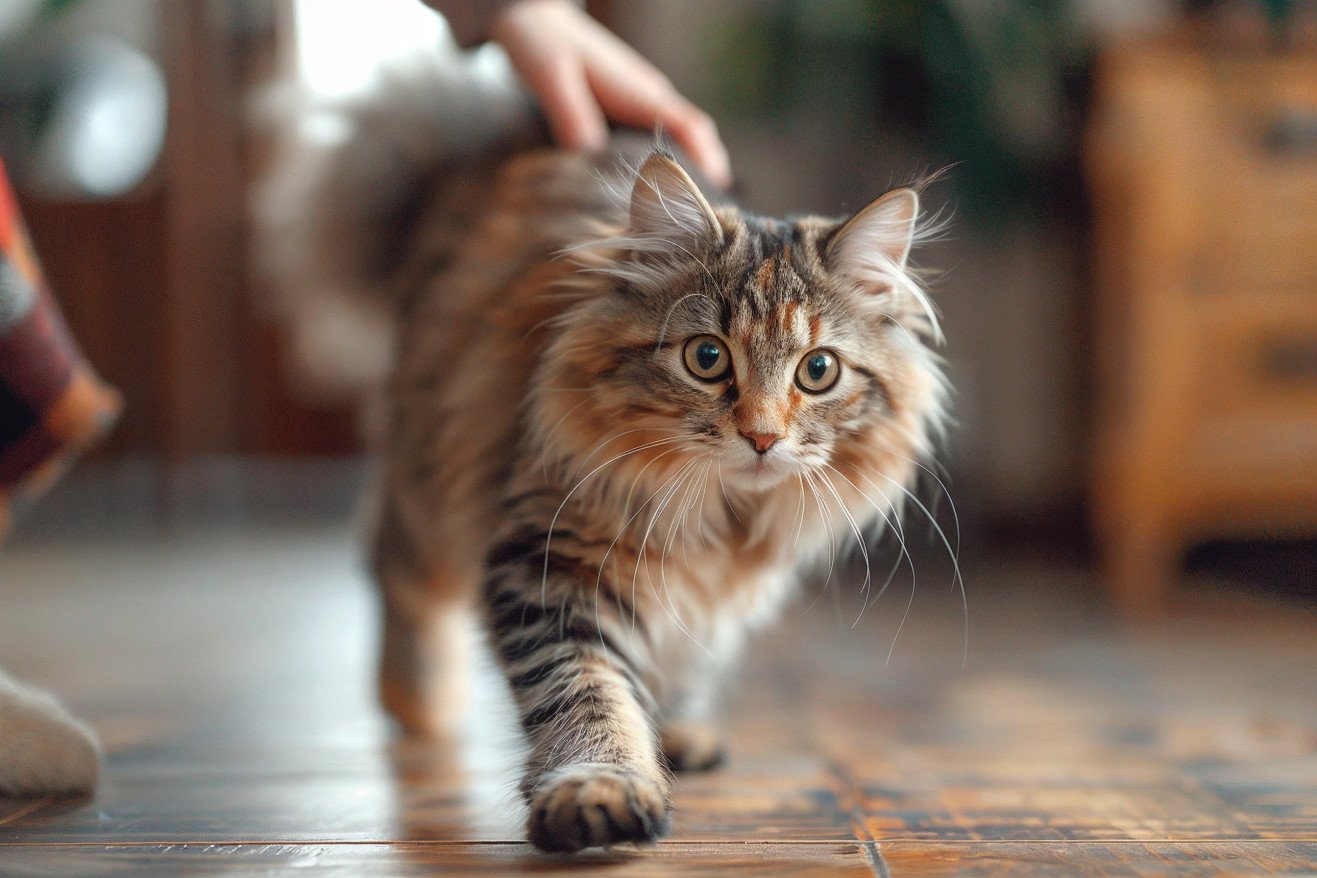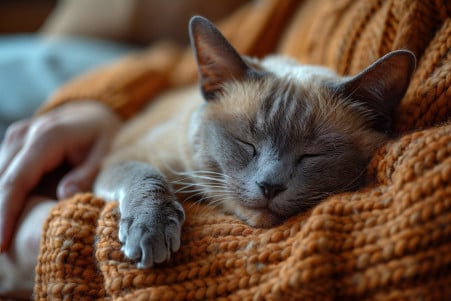Why Does My Cat Run Away From Me? Unraveling Feline Behavior
14 May 2024 • Updated 13 May 2024

There are many reasons why your cat may run away from you when you try to approach it, from natural instincts to past experiences to a simple desire for alone time. Cats are often more comfortable when they can control their social interactions, and when you suddenly approach or try to pick them up, it can trigger their prey response. However, when your cat runs away from you, it's not necessarily because they're scared or don't trust you. Instead, it's often a sign of their independence and their need for space.
While this can be hard to understand and even feel like a rejection, learning about the science of cats can help you better understand your cat and improve your relationship with them. In this article, we'll look at research on cat behavior, socialization, and the role of a stress-free environment in your cat's life. By the end of the article, you'll have a better understanding of your cat and how you can improve your relationship with them so that it's based on trust and mutual respect.
Why does my cat run away from me?
Why Do Cats Leave Home?
Cats are hunters with a strong prey drive, so they may leave home to chase prey, leading them to avoid people and other animals, according to research from PetMD. Cats are also territorial, so they may leave home to roam or protect their territory from perceived threats, according to a blog post from Tractive. Finally, cats are solitary, so they may leave home to find a place to be alone and independent, even from their human family.
Some behaviors, like the tendency to run away, are hardwired into cats' wild DNA and can't be completely eradicated, according to PetHelpful. For example, cats' prey drive leads them to hunt, which can lead them to leave home. Cats' territorial nature can lead them to roam in order to mark their territory or keep other animals away from it.
However, understanding these instincts can help cat owners set realistic expectations and provide appropriate outlets. Environmental enrichment, vertical territory, and opportunities to engage in safe hunting behaviors can help cats meet their natural instincts while living indoors. This is why understanding, rather than punishing, these instincts is so important to a healthy human-cat relationship.
Genetics and Breed
Genetics and breed can play a role in a cat's personality and independence, according to Burgess Pet Care. Knowing a cat's breed and history can help pet parents better understand their cat's needs and how to earn their trust. Meanwhile, Vet Help Direct explains that cats that weren't socialized properly or had negative experiences during kittenhood are more likely to run away from their owners.
Understanding how a cat's early life experiences have shaped their personality can help pet parents create an environment that meets their cat's needs and helps them feel safe and secure.
Environmental Factors and Stress Triggers
Household changes, like new people, pets, or furniture, can be stressful and lead to a cat running away, according to Catster. Meanwhile, loud noises, strong smells, or other disruptions can also lead to a cat's flight response, according to Vet Help Direct. Cats may run away or hide when they feel overwhelmed or stressed in their environment.
In addition, health problems, like pain, discomfort, or cognitive issues, can also contribute to avoidance behavior, according to Catster. If you can figure out and reduce these stress triggers, you can help your cat feel more comfortable and safe in their environment so that they don't feel the need to run away.
Trust and Bonding
Patience and a willingness to respect your cat's boundaries are key to gaining trust, according to PetHelpful. Let your cat take the lead and come to you on their own terms, as suggested by WikiHow. Positive reinforcement, play, and routine can all help to build a stronger bond, according to OutdoorBengal.
Make sure to provide safe spaces and vertical territory for your cat to feel safe and in control, says Rover.com, which can help ensure that your cat feels comfortable and in control enough to come to you at their own pace. If you're still having trouble, a certified animal behaviorist can help, offering personalized advice and support to help you meet your cat's unique needs and concerns.
By making sure that you're always considering your cat's comfort, listening to their cues, and working to build trust through positive experiences, you can make sure that you and your cat have a happy, healthy relationship.
How to Stop Your Cat From Escaping
Spaying or neutering cats can help reduce the desire to roam, according to The Spruce Pets. Physical barriers like catios and door guards can also be used to keep cats from escaping, according to PetSafe.
Deterrents like smells and sounds can be used to keep cats away from escape routes, according to The Spruce Pets and PetDoors.com. In addition, making sure cats have plenty of enrichment and play to meet their needs for hunting and exploration can help keep them happy and prevent them from trying to escape, according to PetSafe.
Finally, it's important to make sure your cat is microchipped and wearing a collar with an ID tag in case they do escape, according to The Spruce Pets and Catster. These steps will help you keep your cat from running away and ensure they're returned to you safely if they do.
What to Do If Your Cat Is Lost
If your cat is lost, the first thing you should do is search your home and property thoroughly, as cats often hide in surprising places, according to Pet FBI. Contact your local animal control agency and shelters and give them a description of your cat and photos, says Blue Cross.
Go door to door in your neighborhood, calling your cat's name and leaving out items with their scent, recommends Cats Protection. Make posters and use social media to let people know that your cat is missing, advises Battersea Dogs & Cats Home.
You may also want to try setting up a humane trap with food or items that smell like your cat to help lure them back home, according to Rover.com. These steps can help you find your cat and bring them home safely.
Conclusion: Fostering a Harmonious Relationship
Cats are independent and intricate animals, and recognizing their natural behaviors is important to forming a successful and fulfilling relationship. By giving them space and letting them come to you, you can help build a relationship based on trust and safety.
It will take time, positive reinforcement, and a stress-free environment to build a strong relationship with your cat. If you find that you're still struggling, don't be afraid to work with a certified animal behaviorist, who can help you come up with a plan that's tailored to your cat's specific needs.
In the end, the benefits of a successful relationship with your cat are immeasurable. By accepting their independence and working to meet their individual needs, you can form a bond that will benefit both of you. With a little bit of patience and understanding, you can have a loyal and loving friend in your cat.


